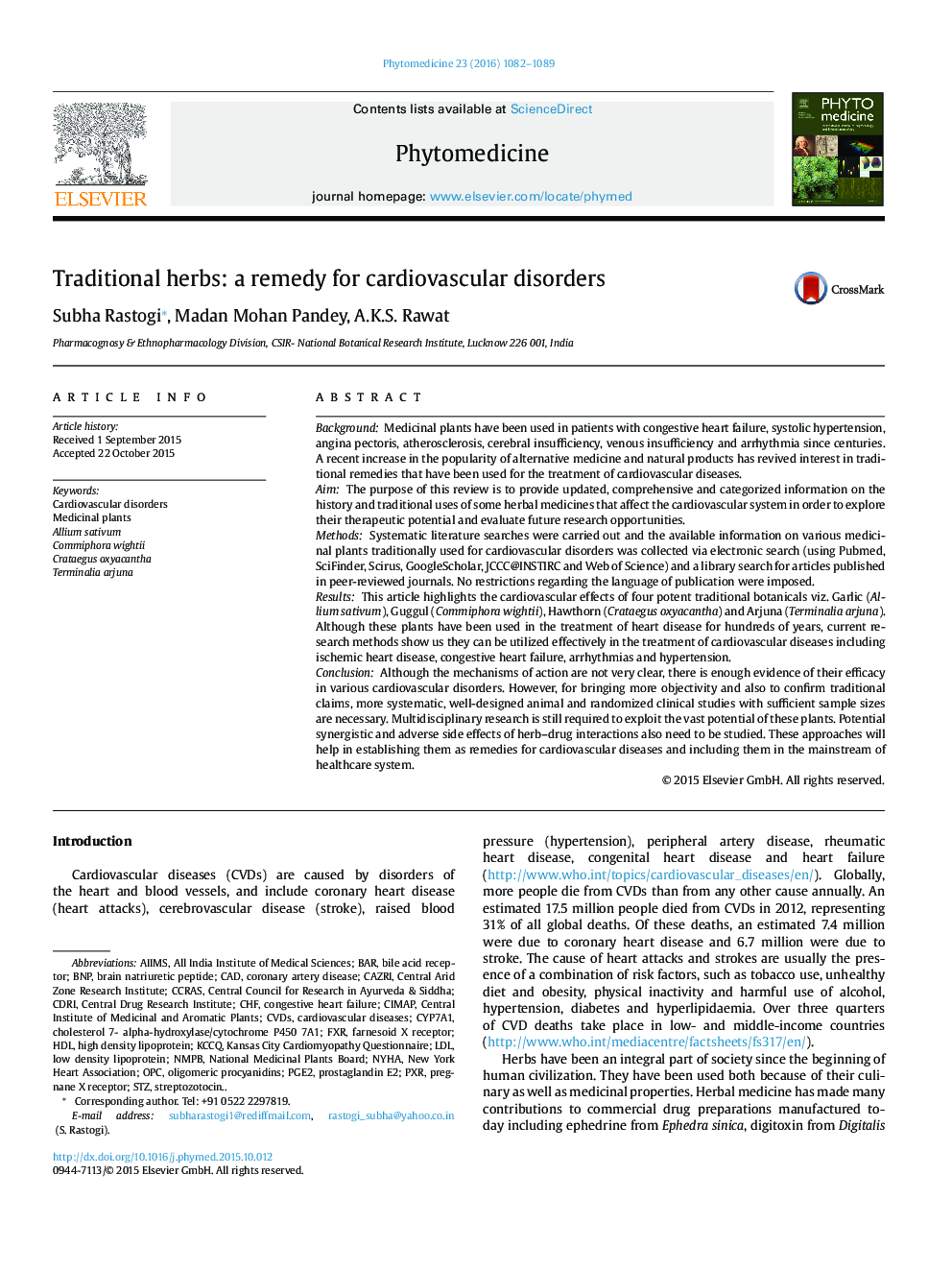| کد مقاله | کد نشریه | سال انتشار | مقاله انگلیسی | نسخه تمام متن |
|---|---|---|---|---|
| 2496191 | 1116113 | 2016 | 8 صفحه PDF | دانلود رایگان |
BackgroundMedicinal plants have been used in patients with congestive heart failure, systolic hypertension, angina pectoris, atherosclerosis, cerebral insufficiency, venous insufficiency and arrhythmia since centuries. A recent increase in the popularity of alternative medicine and natural products has revived interest in traditional remedies that have been used for the treatment of cardiovascular diseases.AimThe purpose of this review is to provide updated, comprehensive and categorized information on the history and traditional uses of some herbal medicines that affect the cardiovascular system in order to explore their therapeutic potential and evaluate future research opportunities.MethodsSystematic literature searches were carried out and the available information on various medicinal plants traditionally used for cardiovascular disorders was collected via electronic search (using Pubmed, SciFinder, Scirus, GoogleScholar, JCCC@INSTIRC and Web of Science) and a library search for articles published in peer-reviewed journals. No restrictions regarding the language of publication were imposed.ResultsThis article highlights the cardiovascular effects of four potent traditional botanicals viz. Garlic (Allium sativum), Guggul (Commiphora wightii), Hawthorn (Crataegus oxyacantha) and Arjuna (Terminalia arjuna). Although these plants have been used in the treatment of heart disease for hundreds of years, current research methods show us they can be utilized effectively in the treatment of cardiovascular diseases including ischemic heart disease, congestive heart failure, arrhythmias and hypertension.ConclusionAlthough the mechanisms of action are not very clear, there is enough evidence of their efficacy in various cardiovascular disorders. However, for bringing more objectivity and also to confirm traditional claims, more systematic, well-designed animal and randomized clinical studies with sufficient sample sizes are necessary. Multidisciplinary research is still required to exploit the vast potential of these plants. Potential synergistic and adverse side effects of herb–drug interactions also need to be studied. These approaches will help in establishing them as remedies for cardiovascular diseases and including them in the mainstream of healthcare system.
Figure optionsDownload high-quality image (192 K)Download as PowerPoint slide
Journal: Phytomedicine - Volume 23, Issue 11, 15 October 2016, Pages 1082–1089
